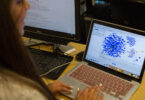The impact of current events on education has been strong, to say the least. With the political climate in flux, violence against minorities on the rise, and a global health crisis on top of all that, teachers are feeling the pressure to make sure their classrooms are safe places for all students.

Tolerance and empathy are two traits that have become increasingly important to instill in students at an early age. Aside from this, the other outcomes that teachers hope to achieve through their instruction have not changed. Instead, these social issues have made a significant impact on the resources and tools available to education professionals.
The world is a scary place right now, but teaching kids how to cope with those fears should be a top priority. For one, there has been an increased need for counselors within public school systems. Issues that were once thought of as regional problems are now issues on a national scale, so students are dealing with bigger problems than their small towns.
Here are some examples of how the current climate of the world is changing the educational system for the better:
Volunteer opportunities outside of the classroom
Having volunteer opportunities that are outside the bounds of school is important. Teachers can get to know their students better on a one-on-one basis. This helps form friendships before personal problems arise and gives teachers an advantage when dealing with potentially disruptive behavior.
Offering volunteer opportunities can also help students become more active members of their communities because they will be building a positive reputation around their neighborhoods. Furthermore, volunteering can help students appreciate the privileges they have and understand other people’s rights as well.
Tolerance and empathy courses in high school
Teaching empathy and tolerance at K-12 levels is important, but it is even more so in high school. College brings new experiences and challenges for students to overcome, so K-12 programs can serve as preparation for what’s next after graduation. Teachers give lessons on how to communicate with people from all walks of life through role-playing scenarios.
This also applies to more modern methods of education, such as the Kto12 AMA online education offered to distance learners. Other online certification programs promote skills in communication, conflict management, and empathy.
Teaching tolerance and empathy is also important because sometimes, students have to learn lessons the hard way. They need to know how to cope with the difficult times so that they won’t resort to violence or self-harm.
The implementation of “restorative practices”
Students have to learn how to take ownership of their actions and allow them to them think before they act or speak. This is the goal of “restorative practices.” Instead of using punitive measures, educators use restorative practices to teach empathy and encourage students to put themselves in one another’s shoes.
Teachers are no longer sticking to the same old curriculum. All these issues have forced teachers to think outside the box when it comes to what they are teaching. The implementation of different types of technology is being explored as well so that students can take advantage of what they have at their disposal to be successful learners.
State-mandated health classes that incorporate mental health
Teachers are being encouraged to talk more about mental health so that students can take the lessons they learn in class and apply them to their personal lives. As teacher stress levels rise, students’ mental health must not suffer because of this.
The stigma against mental health is slowly being broken, and the more it is discussed in schools, the more opportunities there are for students to seek help. This is why it is important to have mental health be part of the curriculum, so students can learn how to cope with their emotions and turn them into strengths, if possible.
Social media literacy courses to avoid dangers of cyber use
Students can never be too prepared for what awaits them out in the “real world,” and these courses teach students about their digital footprints. Kids must know how to avoid cyber bullying, sexting, and other issues that could arise through social media use.
There are good and bad sides to the digital world, but some students may be unaware of that. This is why it’s a teacher’s job to teach kids about the dangers of using the internet. There’s always more to learn, and schools are trying to prepare students for the worst.
There are a lot of changes going on in schools all across the globe as a result of the state of the current events. These changes in the educational system have created a new normal that teachers have to work with. They have had to adapt their lessons and be aware of their student’s needs so that they know when they are struggling instead of falling behind academically.




Leave a Comment